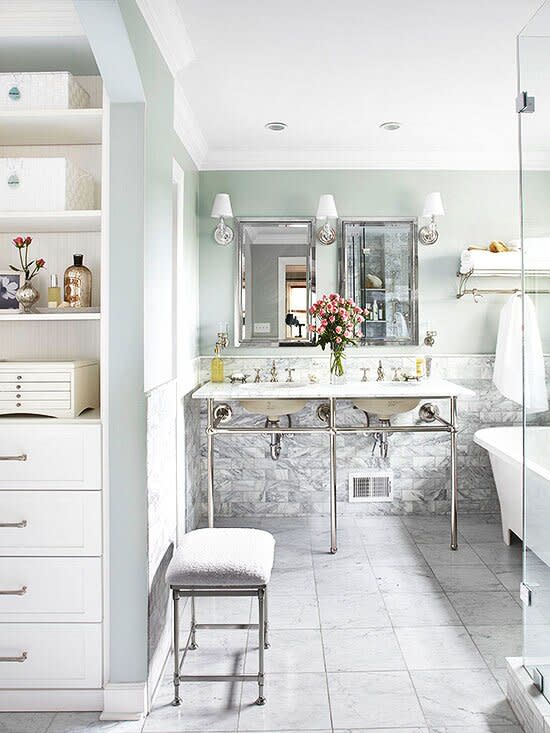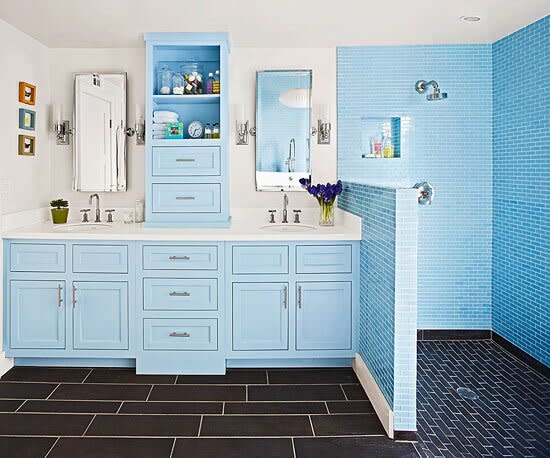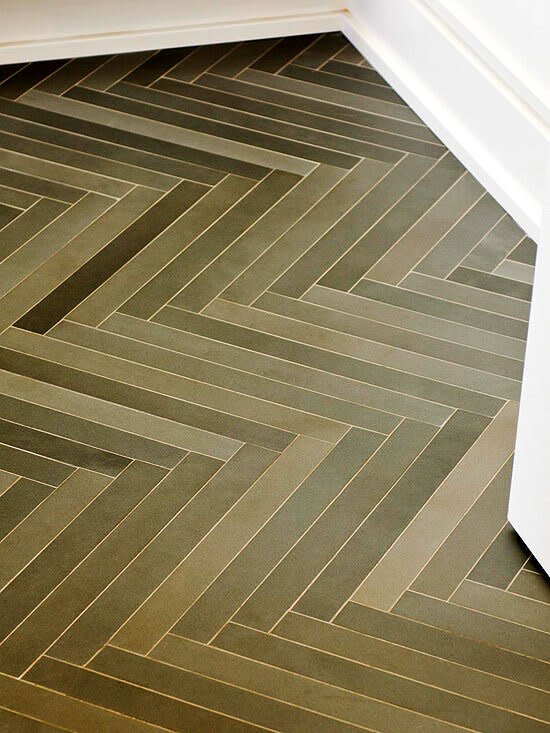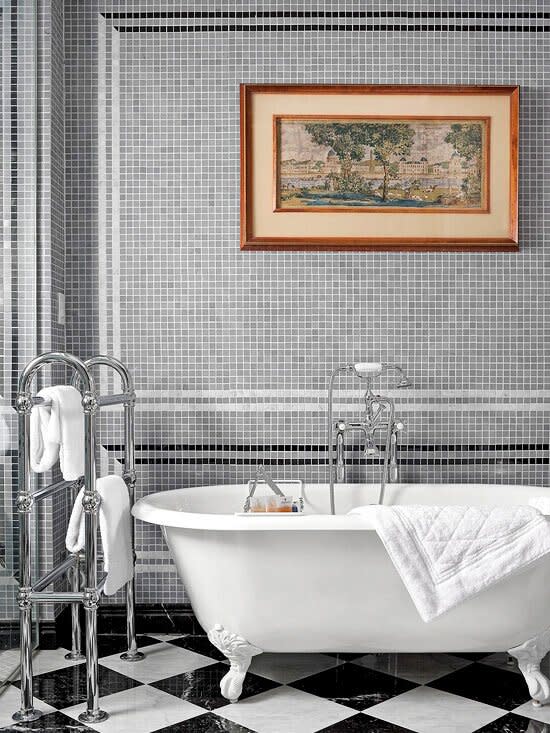Floor Tile Patterns

Add interest to your rooms by taking your tiled floors in a new direction. You can create a patterned floor by setting a tile's shape, size, or color in a new or interesting way. The design possibilities are nearly endless. Here are a few tips for using five of the most popular arrangements.
Straight lay is a grid pattern that involves laying same-color tiles with the corners matched up and grout applied in intersecting lines. This basic design is popular because it's the easiest to install and delivers a strong, clean look. Long, uninterrupted grout lines make this pattern ideal for drawing the eye toward a window with an amazing view or another focal point in a room. The simple styling of the straight lay pattern also means it won't compete stylistically with other patterns or designs in a space, making it a smart choice if resale value is top of mind. Although this pattern is a good DIY project, it nonetheless requires some planning. Never assume a room is perfectly square; lay down your pattern before permanently adhering the tiles.

Running bond or brick pattern is another simple and attractive option for your floors. The end of each same-color tile is lined up with the center of the tile above and below it to create staggered grout lines. Commonly used on backsplashes and walkways, running bond is becoming more popular for indoor tile floors because it's great at hiding imperfections like crooked walls. Offset grout lines make it difficult for the eye to focus on minor flaws. The application is also useful in a bathroom with tiled walls because it breaks up the floor pattern so grout lines don't carry up the wall. Brick patterns are relatively simple to install, but always create a chalk line before starting and use tile spacers to ensure consistent grout width.

Herringbone is a look created when rectangle tiles are installed in a 45 degree angled V shape. Popular in Europe for hundreds of years, the intricate herringbone pattern is an elegant way to visually expand a small room. The wide Vs create movement, drawing the eye outward to create the illusion of more width. The pattern is at its best with neutral colors in a narrow hallway or small bathroom, but can be too busy for a large room. This involved design is too tricky for DIY installation, but industrious homeowners can achieve the look using mosaic tiles (small tiles attached to a mesh backing in a herringbone pattern). If you hire a professional installer, you can use standard rectangle tiles or get a completely custom look by having larger stone tiles cut down to size.

Checkerboard alternates two colors of same-size square tiles in either a straight line or diagonal pattern. Although traditionally created with black and white tiles, you could also use different shades of a color for a subtle look or go wild with bold, contrasting hues. The checkerboard pattern makes a strong statement, so it is most commonly used in smaller spaces like bathrooms or mudrooms. It can also look great in a large kitchen or living room, but it's best to limit other patterns in the space to avoid overwhelming the eye. When installing this design, first use chalk lines to find the center of the room and dry lay your first four squares around that point. Work the pattern out to the walls, so cuts will be around the perimeter of the room, and only permanently install the pieces when you are happy with the design.

The basket-weave pattern re-creates the crosshatch stitching found on woven baskets by laying rectangular tiles into square blocks, alternating between horizontal and vertical. Extremely popular in the early 1900s, basket weave is a classic way to add interest to floors. Marble is a classic choice for this design, but it can be pricey so many homeowners limit the material to a small bathroom. Matte porcelain tiles are an affordable alternative for a traditional space and glazed ceramic creates a flashy shine in a modern home. There are many mosaic basket-weave tiles available for easy installation. For a seamless, professional-looking installation, lay out the interlocking sheets on the floor starting along one wall and working across the room. If the sheets are direction specific, be sure to follow the arrows on the backs.
Quick Tips for Cleaning Tile Floors
Flooring Finder Quiz Take this quick quiz and get help choosing the best flooring for you.
Wood Look Tile See a kind of tile that resembles rich hardwood.
